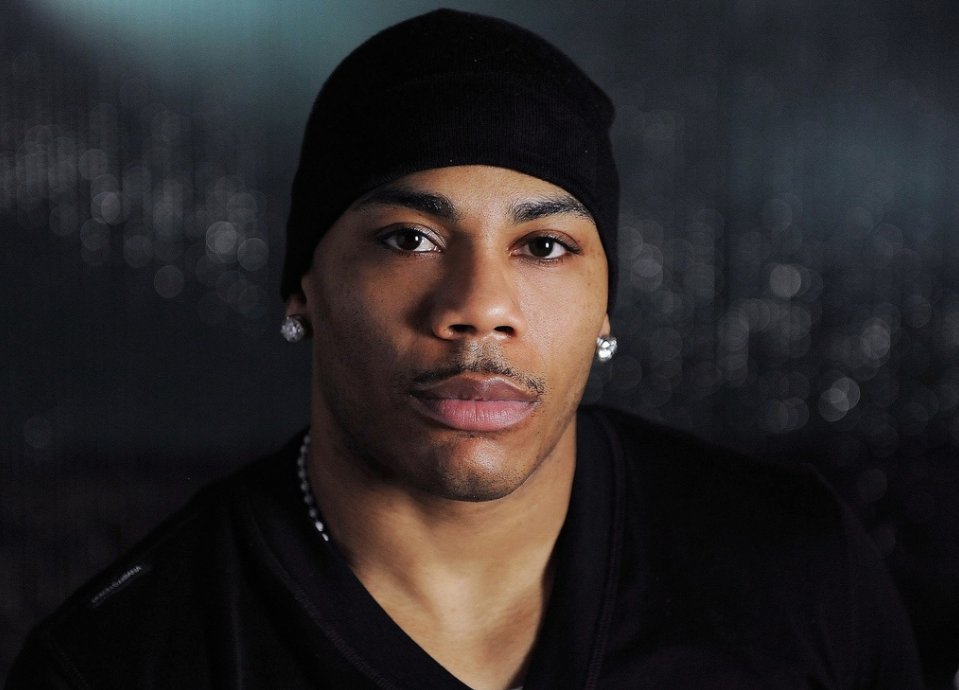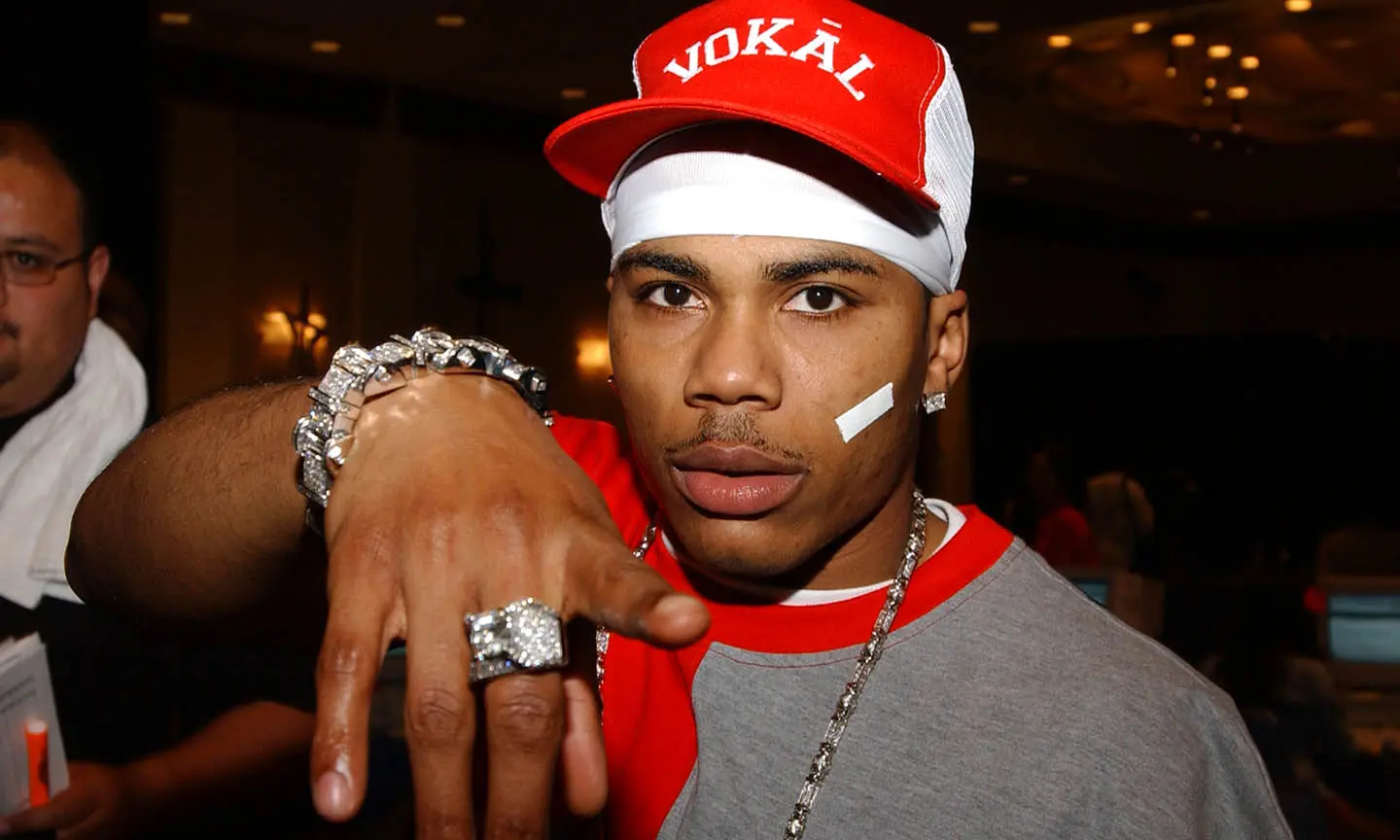Nelly Band Aid - An Iconic Fashion Statement
There are certain images, you know, that just really stick with you, and for many of us who grew up with or simply appreciate the sound of early 2000s hip hop, the sight of Nelly with a small plaster on his cheek is one of those lasting impressions. It's a moment that, in a way, sort of captured a specific time and a particular cultural vibe, becoming, you could say, a rather significant piece of that era's hip hop fashion story. It was more than just a simple medical covering; it almost became a part of his signature look, something that made him stand out, really.
This piece aims to take a closer look at that very distinctive visual, exploring the background of the celebrated facial plaster and how it really made its mark on both popular style and the broader cultural scene. We'll, in some respects, walk through the history that surrounds this interesting choice, talking about its origins and how it came to be such a memorable part of Nelly's public image. It's a bit like taking a trip back to those years, remembering how things were, and seeing how this small item played a part in it all.
For those who might be curious, or perhaps just a little fuzzy on the details, the story of the plaster on Nelly’s face has a few layers to it. It wasn't just a random fashion pick; there was, actually, a very specific reason for its initial appearance, which then, you know, sort of evolved into something much bigger than just a simple bandage. It became a talking point, a symbol, and something people still ask about even now, many years later. It’s pretty fascinating how something so small can hold so much meaning.
Table of Contents
- Nelly - A Look at the Artist Behind the Band-Aid
- Why Did Nelly Wear a Band Aid on His Face?
- What Was the Story Behind the Nelly Band Aid's First Appearance?
- How Did the Nelly Band Aid Become a Symbol of Friendship?
- What Kind of Nelly Band Aid Was It?
- The Nelly Band Aid's Place in Culture and Style
- The Nelly Band Aid - More Than Just an Accessory
- Revisiting the Nelly Band Aid Era
Nelly - A Look at the Artist Behind the Band-Aid
Nelly, the well-known rap artist, is someone many people remember for a whole host of things. He's certainly celebrated for his catchy rap songs, the kind that, you know, would get stuck in your head and make you want to move. But beyond his musical contributions, he's also quite recognized for his rather interesting sense of style, especially when he'd show up at big events or just be out and about, walking the streets. His choices in clothing and accessories often caught people's attention, and his appearance was always, you know, a bit of a conversation starter.
He's a person who, in a way, has really managed to stay true to his roots, even while dealing with the various ups and downs of the music business. It's not always easy to keep your own voice and identity when things are constantly shifting around you, but he seems to have done a good job of that. He’s someone who has, you could say, found ways to keep his art fresh and relevant, all the while holding onto what makes him, well, him. That's a pretty big deal for someone in the public eye, actually.
A key part of Nelly's story, as it turns out, involves his group, St. Lunatics. This collective of musicians and friends played a significant role in his early career and, as we'll see, had a direct connection to the famous facial plaster. One of the members of this group was City Spud, a collaborator who worked with Nelly on some of his popular songs, including the hit tune 'Ride Wit Me'. Their connection was, you know, pretty close, and it really shaped some of the things Nelly did, especially in the early days. That bond, you might say, was very important.
Personal Details
| Name | Nelly |
| Occupation | Rap Artist |
| Known For | Catchy rap songs, unique fashion sense, the facial plaster |
| Associated Group | St. Lunatics |
| Key Collaborator | City Spud (from St. Lunatics) |
Why Did Nelly Wear a Band Aid on His Face?
The question of why Nelly wore that small, rectangular plaster on his face is one that, you know, has popped up quite a bit over the years. It's something that, honestly, many fans and even casual observers have wondered about. It wasn't just a fleeting thing; it became, in a way, a very consistent part of his public image for a period of time, leading people to ask about its purpose. There are, actually, a few different ideas and explanations that have circulated, and it's interesting to look at how the story, you know, kind of unfolded over time.
Initially, the reason for the facial covering was, apparently, pretty straightforward. It seems that Nelly first put it on to cover up an injury he had sustained. This was, you know, during a particular time, and it made sense for him to have something on his face to protect or conceal a wound. So, in the beginning, it was, quite simply, a practical item, serving a very direct purpose. That's how it all started, more or less, a rather simple explanation for something that became quite complex in its meaning.
However, the story of the plaster didn't just end there once the initial injury was, you know, all better. It seems that even after the wound had healed completely, Nelly kept on wearing it. This continued presence of the plaster, long after its practical need had passed, is what really got people talking and wondering. It suggested that there was, perhaps, a deeper meaning behind his choice, something more than just a quick fix for a scrape. This shift from necessity to symbol is, arguably, what makes the whole thing so interesting.
What Was the Story Behind the Nelly Band Aid's First Appearance?
When the plaster first showed up on Nelly's face, the word going around was that it was, you know, for a basketball injury. This was the explanation that, apparently, was given to the press, and it seemed to make sense at the time. A basketball injury could easily result in a facial wound that would need a covering, so, you know, it wasn't a hard story for people to believe. It was, in a way, a very common sort of mishap that many people could relate to, making the reason for the plaster seem pretty normal.
The curious thing, though, is that this supposed basketball injury, according to some accounts, lasted for a rather long time. We're talking about something that, you know, was said to have gone on for ten years. Now, that's a pretty extended period for a simple injury to require a continuous covering, isn't it? This prolonged use of the plaster, even if it started for a genuine physical reason, really began to hint at something more than just a temporary medical need. It suggested that its presence was, you know, becoming something else entirely, a bit of a mystery, actually.
Fans, as you might expect, have been looking back at Nelly's older music videos, and it's pretty clear that many of them, you know, feature him with that distinctive plaster on his left cheek. These visual records serve as a reminder of how consistently he wore it, making it a recognizable part of his image during that period. So, while the initial reason might have been an injury, the sheer persistence of the plaster in his public appearances certainly made people, you know, start to wonder about the full story behind it. It really became a part of his visual brand, you could say.
How Did the Nelly Band Aid Become a Symbol of Friendship?
While the initial explanation for the plaster was an injury, the story, you know, actually evolved into something much more personal and meaningful. According to what Nelly shared with the press, he continued to wear the plaster because of a friend, or perhaps a music producer, who was, at the time, in jail. This was, apparently, his way of letting this person know that he hadn't been forgotten, that he was still very much in Nelly's thoughts. It was, in a way, a very touching gesture, a visible sign of loyalty and remembrance.
The friend in question was City Spud, a member of Nelly's group, St. Lunatics. City Spud had, you know, been sentenced for armed robbery, which meant he was going through a very difficult time. Nelly, it seems, wanted to offer his unwavering support to his friend, and the plaster became a constant reminder of that connection. It was a way to keep City Spud, you know, close to his heart and mind, even when they couldn't be physically together. This act of solidarity really gave the plaster a deeper layer of meaning, didn't it?
This visible display of support, the plaster on his face, was, you know, meant to represent the difficulties and suffering that City Spud was experiencing. It was a way for Nelly to acknowledge the pain his friend was enduring, and it also, perhaps, carried a message of hope for his eventual return. So, it wasn't just about covering a healed scar; it was, in a way, a very public and consistent expression of empathy and enduring friendship. This transformation of a simple item into a symbol of a powerful bond is, actually, quite remarkable.
The duo, Nelly and City Spud, had, you know, apparently worked together on Nelly's popular song 'Ride Wit Me'. This shared creative history made the gesture even more poignant, as it highlighted a bond that went beyond just friendship, extending into their professional lives as well. So, the plaster became a nod to their shared past and a quiet statement of support for a friend facing tough times. It's a pretty powerful way to communicate, isn't it, without saying a single word, just by wearing something small?
What Kind of Nelly Band Aid Was It?
People often wonder about the specific type of plaster Nelly wore. You know, it wasn't just any ordinary one. Many people, apparently, noticed that the plasters he used were, you know, quite rectangular and seemed to be very neat, almost perfect in their appearance, especially when compared to the kind of regular ones you might find in a first-aid kit. This distinct look, the way it sat on his face, really made it stand out, giving it a very particular aesthetic.
The precise brand or kind of adhesive material isn't, you know, explicitly detailed in the information we have. However, the consistent look of it, that very clean, rectangular shape, suggests that he might have been using a particular type, or perhaps even customizing them in some way. It wasn't, you know, a messy or haphazard application; it was always placed very deliberately, contributing to its iconic status. So, while we don't have the exact product name, its visual consistency is, actually, quite notable.
The fact that people even paid attention to the shape and neatness of the plaster, you know, tells you something about how much it became a part of his image. It wasn't just a blur on his face; it was a clear, defined element that people observed and remembered. This level of detail, the way it was always, you know, pretty much the same, adds another layer to the story of the Nelly band aid and its lasting impact on how he was perceived by the public. It really shows how much attention people paid to every little detail of his look.
The Nelly Band Aid's Place in Culture and Style
The presence of the Nelly band aid on his face, as a public figure, did more than just cover an injury or signal support for a friend. It, you know, rather quickly became a part of a larger cultural conversation, especially within the world of hip hop fashion. This small item, seemingly insignificant on its own, managed to mark a specific period in time, reflecting the trends and attitudes that were, you know, very much alive in the early 2000s. It’s pretty interesting how something so simple can carry so much cultural weight, isn't it?
This particular accessory, the plaster, wasn't just something Nelly wore; it became, in a way, a distinctive element of 2000s hip hop style. It influenced how people saw fashion within that genre, adding a unique touch to the overall look. It was, you know, a subtle yet very noticeable statement that set him apart, and in doing so, it helped define a certain aesthetic for the era. So, it wasn't just about Nelly; it was about how his personal choice resonated with and, you know, actually shaped broader fashion sensibilities of the time.
The Nelly band aid, in some respects, serves as a kind of cultural marker, allowing us to look back and remember what was popular and what felt authentic during that period. When we revisit images or videos from that time, the plaster on his face is, you know, often one of the first things that comes to mind, immediately transporting us back to those years. It's a powerful visual cue that encapsulates a moment in time, a specific blend of music, fashion, and attitude that defined an era. It's almost like a little timestamp, actually.
The Nelly Band Aid - More Than Just an Accessory
The story of the Nelly band aid goes a little deeper than just a fashion choice or a simple medical covering. It actually tells us something about how personal experiences and expressions can become intertwined with public image and cultural trends. What started as, you know, a very personal reason, whether an injury or a show of support, transformed into something much larger, something that resonated with a wide audience. It's a clear example of how an individual's actions can, you know, sometimes accidentally create a cultural phenomenon.
This item, the plaster, became a sort of quiet statement, a way for Nelly to communicate something without needing to say a lot of words. It was a visual representation of loyalty and remembrance, a constant reminder of his bond with City Spud. This silent communication, you know, made the plaster even more powerful as a symbol, allowing people to interpret its meaning and connect with the story behind it. It's a pretty clever way to get a message across, actually, just by wearing something.
The fact that people still talk about the Nelly band aid today, many years after its initial appearance, really speaks to its lasting impact. It's not just a fleeting memory; it's something that, you know, has stayed in the collective consciousness as a distinct part of hip hop history. This enduring recognition shows that the plaster was more than just a passing trend; it was a significant cultural touchstone that, you know, left a very clear mark on how we remember the early 2000s. It has, you could say, a very special place in that era's story.
Revisiting the Nelly Band Aid Era
Looking back at the time when the Nelly band aid was a prominent feature, you know, helps us appreciate the layers of meaning it held. It wasn't just about a rap artist wearing something on his face; it was about the stories, the friendships, and the cultural shifts that were happening around him. This revisit allows us to, in some respects, understand how even small details can become very important symbols within popular culture. It's a bit like piecing together a puzzle, seeing how all the parts fit together to create a bigger picture.
The way Nelly, you know, navigated the various challenges of the music business, all while keeping his unique style, is pretty remarkable. He managed to adapt to changes in the industry, yet he always, you know, stayed true to his own identity and his roots. The plaster, in a way, became a testament to that resilience and authenticity, a visible sign of someone who wasn't afraid to be himself, even when the spotlight was shining brightly. That's a pretty strong message, actually, for anyone trying to make their way.
So, as we consider the story of the Nelly band aid, it becomes clear that it's more than just a piece of fashion history. It's a narrative that touches upon personal connections, public perception, and the way culture absorbs and transforms everyday items into something memorable. It's a pretty interesting case study, you know, of how a simple plaster could become such a talked-about and enduring symbol in the world of music and style. It really makes you think about the small things that leave a big impression.
- Was Bob Saget Married
- Wisconsin Volleyball Team Lek
- Wisconsin Team Volleyball Leak
- Boar Corps Project Chapter
- Godlike Productionscom

Nelly music, videos, stats, and photos | Last.fm

Nelly music, videos, stats, and photos | Last.fm

Best Nelly Songs: 20 Tracks From The Hip-Hop Hitmaker